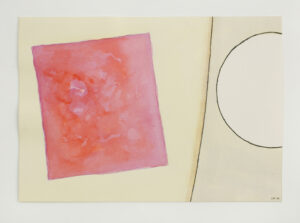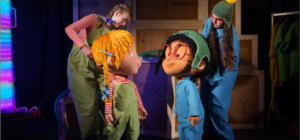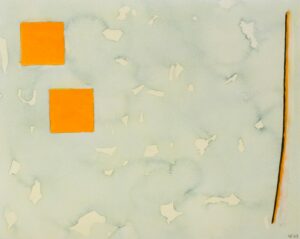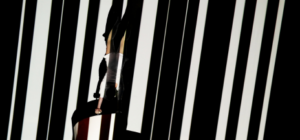LEARN TRADITIONAL KUNG FU & TAI CHI
from Three-Time International Gold Medallist
DANIEL SHAW-ABULAFIA
at The Highgate Society, 10A South Grove, London N6 6BS
Children: Mondays weekly, 17.45 to 18.30 from September 26th
Adults: Mondays weekly, 18.30 to 19.30 from September 26th
COME TO A FREE TRIAL CLASS!
Do come along to meet your neighbours, enjoy a good cup of coffee and find out what is happening in Highgate.
The planning committee often have someone on hand to answer planning queries.

Sunday 8 September at 11am & 2pm
Tickets: £14 | Suitable for ages 2-6
Join Shoe Baby on a fantastical sing-along journey as this baby explores the sea, the air, and the zoo – all from the comfort of a shoe! and featuring music by Tom Gray of Gomez, this 30-minute show is perfect for children aged 2-6.
After the show, enjoy 20 minutes of play and fun activities including a shoe shop, a giant shoe, and a make-a-town scene.
LEARN TRADITIONAL KUNG FU & TAI CHI
from Three-Time International Gold Medallist
DANIEL SHAW-ABULAFIA
at The Highgate Society, 10A South Grove, London N6 6BS
Children: Mondays weekly, 17.45 to 18.30 from September 26th
Adults: Mondays weekly, 18.30 to 19.30 from September 26th
COME TO A FREE TRIAL CLASS!

This exhibition, Cuillin Bantock’s fourth at Highgate Gallery, will be the culmination of sixty five years of
experience as a visual artist.
Bantock’s work is all landscape-based. Life-long familiarity with a particular coastal sand-dune system in North
Wales is a persistent point of reference. His choice of media is wide-ranging and includes oil paint, acrylic, gouache,
conte and linocut. His approach has shifted from representation to abstraction, but he strongly believes that all
art must relate to something outside itself.
The exhibition will show two types of work: Indian Ink drawings, and watercolour paintings.
The Indian ink drawings are from the 2022 series ‘Forty-one approaches to a View’. The ‘view’ is of a particular
duneland studied repeatedly from the same spot. The emphasis has been on making quite simple statements
about that particular space. The first studies that Bantock made of this terrain (also in Indian ink) date from 1961.
It was only while making the recent drawings in 2022 that he realised that other artists, in their later years,
had adopted a similar approach; for example Hokusai, with his ‘Thirty Six Views of Mount Fuji’.
The watercolours were made between 2020 and 2024. These are derived from the same landscape as the
ink drawings, but with a particular emphasis on pictorial space (through flatness) and pictorial light
(through colour), but handled abstractly without reference to specific locales. To some extent the watercolours
are a new departure for Bantock. His only previous experience with the medium was very occasional figurative
work (again, of duneland). He describes watercolour as ‘the most challenging medium of all.’
The two bodies of work are united by a perennial search for clarity of execution and expression, and pictorial economy
free of didacticism, leaving room for spontaneity.
Cuillin Bantock has enjoyed a rich and varied career as artist, scientist, educator and writer. He is an Oxford-trained
zoologist who worked as a professional biologist for 20 years, and later studied at Camberwell College of Art. He has
written and lectured extensively on a wide range of subjects, including science, wildlife conservation, art and artists.
His work has been exhibited widely over many years, and is held in a large number of private and corporate collections.
Highgate Gallery is delighted to be hosting this exhibition, which Bantock has decided – as he approaches
his ninetieth birthday – shall be his last with us.
Gallery open: Wed – Fri: 13.00 – 17.00, Sat: 11.00 – 16.00, Sun: 11.00 -17.00
Do come along to meet your neighbours, enjoy a good cup of coffee and find out what is happening in Highgate.
The planning committee often have someone on hand to answer planning queries.

This exhibition, Cuillin Bantock’s fourth at Highgate Gallery, will be the culmination of sixty five years of
experience as a visual artist.
Bantock’s work is all landscape-based. Life-long familiarity with a particular coastal sand-dune system in North
Wales is a persistent point of reference. His choice of media is wide-ranging and includes oil paint, acrylic, gouache,
conte and linocut. His approach has shifted from representation to abstraction, but he strongly believes that all
art must relate to something outside itself.
The exhibition will show two types of work: Indian Ink drawings, and watercolour paintings.
The Indian ink drawings are from the 2022 series ‘Forty-one approaches to a View’. The ‘view’ is of a particular
duneland studied repeatedly from the same spot. The emphasis has been on making quite simple statements
about that particular space. The first studies that Bantock made of this terrain (also in Indian ink) date from 1961.
It was only while making the recent drawings in 2022 that he realised that other artists, in their later years,
had adopted a similar approach; for example Hokusai, with his ‘Thirty Six Views of Mount Fuji’.
The watercolours were made between 2020 and 2024. These are derived from the same landscape as the
ink drawings, but with a particular emphasis on pictorial space (through flatness) and pictorial light
(through colour), but handled abstractly without reference to specific locales. To some extent the watercolours
are a new departure for Bantock. His only previous experience with the medium was very occasional figurative
work (again, of duneland). He describes watercolour as ‘the most challenging medium of all.’
The two bodies of work are united by a perennial search for clarity of execution and expression, and pictorial economy
free of didacticism, leaving room for spontaneity.
Cuillin Bantock has enjoyed a rich and varied career as artist, scientist, educator and writer. He is an Oxford-trained
zoologist who worked as a professional biologist for 20 years, and later studied at Camberwell College of Art. He has
written and lectured extensively on a wide range of subjects, including science, wildlife conservation, art and artists.
His work has been exhibited widely over many years, and is held in a large number of private and corporate collections.
Highgate Gallery is delighted to be hosting this exhibition, which Bantock has decided – as he approaches
his ninetieth birthday – shall be his last with us.
Gallery open: Wed – Fri: 13.00 – 17.00, Sat: 11.00 – 16.00, Sun: 11.00 -17.00

Rosy’s onstage career is built on her gleeful frankness about her sex life with men. Now newly single at forty, and advising her teenage daughter about relationships, Rosy wonders if revisiting hyper-macho desires could restore her sexual power, or if there’s a more uncomfortable truth to face.
“A startling, laugh out loud funny and erudite examination of age, relationships and female sexuality” — What’s On Stage

This exhibition, Cuillin Bantock’s fourth at Highgate Gallery, will be the culmination of sixty five years of
experience as a visual artist.
Bantock’s work is all landscape-based. Life-long familiarity with a particular coastal sand-dune system in North
Wales is a persistent point of reference. His choice of media is wide-ranging and includes oil paint, acrylic, gouache,
conte and linocut. His approach has shifted from representation to abstraction, but he strongly believes that all
art must relate to something outside itself.
The exhibition will show two types of work: Indian Ink drawings, and watercolour paintings.
The Indian ink drawings are from the 2022 series ‘Forty-one approaches to a View’. The ‘view’ is of a particular
duneland studied repeatedly from the same spot. The emphasis has been on making quite simple statements
about that particular space. The first studies that Bantock made of this terrain (also in Indian ink) date from 1961.
It was only while making the recent drawings in 2022 that he realised that other artists, in their later years,
had adopted a similar approach; for example Hokusai, with his ‘Thirty Six Views of Mount Fuji’.
The watercolours were made between 2020 and 2024. These are derived from the same landscape as the
ink drawings, but with a particular emphasis on pictorial space (through flatness) and pictorial light
(through colour), but handled abstractly without reference to specific locales. To some extent the watercolours
are a new departure for Bantock. His only previous experience with the medium was very occasional figurative
work (again, of duneland). He describes watercolour as ‘the most challenging medium of all.’
The two bodies of work are united by a perennial search for clarity of execution and expression, and pictorial economy
free of didacticism, leaving room for spontaneity.
Cuillin Bantock has enjoyed a rich and varied career as artist, scientist, educator and writer. He is an Oxford-trained
zoologist who worked as a professional biologist for 20 years, and later studied at Camberwell College of Art. He has
written and lectured extensively on a wide range of subjects, including science, wildlife conservation, art and artists.
His work has been exhibited widely over many years, and is held in a large number of private and corporate collections.
Highgate Gallery is delighted to be hosting this exhibition, which Bantock has decided – as he approaches
his ninetieth birthday – shall be his last with us.
Gallery open: Wed – Fri: 13.00 – 17.00, Sat: 11.00 – 16.00, Sun: 11.00 -17.00
LEARN TRADITIONAL KUNG FU & TAI CHI
from Three-Time International Gold Medallist
DANIEL SHAW-ABULAFIA
at The Highgate Society, 10A South Grove, London N6 6BS
Children: Mondays weekly, 17.45 to 18.30 from September 26th
Adults: Mondays weekly, 18.30 to 19.30 from September 26th
COME TO A FREE TRIAL CLASS!

This exhibition, Cuillin Bantock’s fourth at Highgate Gallery, will be the culmination of sixty five years of
experience as a visual artist.
Bantock’s work is all landscape-based. Life-long familiarity with a particular coastal sand-dune system in North
Wales is a persistent point of reference. His choice of media is wide-ranging and includes oil paint, acrylic, gouache,
conte and linocut. His approach has shifted from representation to abstraction, but he strongly believes that all
art must relate to something outside itself.
The exhibition will show two types of work: Indian Ink drawings, and watercolour paintings.
The Indian ink drawings are from the 2022 series ‘Forty-one approaches to a View’. The ‘view’ is of a particular
duneland studied repeatedly from the same spot. The emphasis has been on making quite simple statements
about that particular space. The first studies that Bantock made of this terrain (also in Indian ink) date from 1961.
It was only while making the recent drawings in 2022 that he realised that other artists, in their later years,
had adopted a similar approach; for example Hokusai, with his ‘Thirty Six Views of Mount Fuji’.
The watercolours were made between 2020 and 2024. These are derived from the same landscape as the
ink drawings, but with a particular emphasis on pictorial space (through flatness) and pictorial light
(through colour), but handled abstractly without reference to specific locales. To some extent the watercolours
are a new departure for Bantock. His only previous experience with the medium was very occasional figurative
work (again, of duneland). He describes watercolour as ‘the most challenging medium of all.’
The two bodies of work are united by a perennial search for clarity of execution and expression, and pictorial economy
free of didacticism, leaving room for spontaneity.
Cuillin Bantock has enjoyed a rich and varied career as artist, scientist, educator and writer. He is an Oxford-trained
zoologist who worked as a professional biologist for 20 years, and later studied at Camberwell College of Art. He has
written and lectured extensively on a wide range of subjects, including science, wildlife conservation, art and artists.
His work has been exhibited widely over many years, and is held in a large number of private and corporate collections.
Highgate Gallery is delighted to be hosting this exhibition, which Bantock has decided – as he approaches
his ninetieth birthday – shall be his last with us.
Gallery open: Wed – Fri: 13.00 – 17.00, Sat: 11.00 – 16.00, Sun: 11.00 -17.00
SAVE – its work in preserving our heritage
Wednesday 18th September 2024
7.30 pm (Doors open 7.00 pm)
10A South Grove N6 6BS and on Zoom
Entry £7.50 including a glass of wine (£3.00 on Zoom)
Booking through Eventbrite – click here.
https://www.eventbrite.co.uk/e/save-its-work-in-preserving-our-heritage-tickets-972059334637?aff=oddtdtcreator
Liz Fuller, the Buildings at Risk Officer at SAVE Britain’s Heritage will talk about SAVE’s work, including its campaign to prevent the demolition of the M&S Oxford Street store and some other recent campaigns, with a focus on London. She will also cover her work as Buildings at Risk officer.
Liz Fuller has a background in law, having been a partner in a city firm specialising in capital markets and has a masters in Historic Building Conservation. At SAVE she has responsibility for maintaining a national register of buildings at risk.
SAVE is a charity which campaigns to save historic buildings threatened by demolition or development all over the country and works with architects, surveyors and others to propose alternative schemes. Where necessary, and with expert advice, it takes legal action to prevent major and needless losses.

This exhibition, Cuillin Bantock’s fourth at Highgate Gallery, will be the culmination of sixty five years of
experience as a visual artist.
Bantock’s work is all landscape-based. Life-long familiarity with a particular coastal sand-dune system in North
Wales is a persistent point of reference. His choice of media is wide-ranging and includes oil paint, acrylic, gouache,
conte and linocut. His approach has shifted from representation to abstraction, but he strongly believes that all
art must relate to something outside itself.
The exhibition will show two types of work: Indian Ink drawings, and watercolour paintings.
The Indian ink drawings are from the 2022 series ‘Forty-one approaches to a View’. The ‘view’ is of a particular
duneland studied repeatedly from the same spot. The emphasis has been on making quite simple statements
about that particular space. The first studies that Bantock made of this terrain (also in Indian ink) date from 1961.
It was only while making the recent drawings in 2022 that he realised that other artists, in their later years,
had adopted a similar approach; for example Hokusai, with his ‘Thirty Six Views of Mount Fuji’.
The watercolours were made between 2020 and 2024. These are derived from the same landscape as the
ink drawings, but with a particular emphasis on pictorial space (through flatness) and pictorial light
(through colour), but handled abstractly without reference to specific locales. To some extent the watercolours
are a new departure for Bantock. His only previous experience with the medium was very occasional figurative
work (again, of duneland). He describes watercolour as ‘the most challenging medium of all.’
The two bodies of work are united by a perennial search for clarity of execution and expression, and pictorial economy
free of didacticism, leaving room for spontaneity.
Cuillin Bantock has enjoyed a rich and varied career as artist, scientist, educator and writer. He is an Oxford-trained
zoologist who worked as a professional biologist for 20 years, and later studied at Camberwell College of Art. He has
written and lectured extensively on a wide range of subjects, including science, wildlife conservation, art and artists.
His work has been exhibited widely over many years, and is held in a large number of private and corporate collections.
Highgate Gallery is delighted to be hosting this exhibition, which Bantock has decided – as he approaches
his ninetieth birthday – shall be his last with us.
Gallery open: Wed – Fri: 13.00 – 17.00, Sat: 11.00 – 16.00, Sun: 11.00 -17.00

This exhibition, Cuillin Bantock’s fourth at Highgate Gallery, will be the culmination of sixty five years of
experience as a visual artist.
Bantock’s work is all landscape-based. Life-long familiarity with a particular coastal sand-dune system in North
Wales is a persistent point of reference. His choice of media is wide-ranging and includes oil paint, acrylic, gouache,
conte and linocut. His approach has shifted from representation to abstraction, but he strongly believes that all
art must relate to something outside itself.
The exhibition will show two types of work: Indian Ink drawings, and watercolour paintings.
The Indian ink drawings are from the 2022 series ‘Forty-one approaches to a View’. The ‘view’ is of a particular
duneland studied repeatedly from the same spot. The emphasis has been on making quite simple statements
about that particular space. The first studies that Bantock made of this terrain (also in Indian ink) date from 1961.
It was only while making the recent drawings in 2022 that he realised that other artists, in their later years,
had adopted a similar approach; for example Hokusai, with his ‘Thirty Six Views of Mount Fuji’.
The watercolours were made between 2020 and 2024. These are derived from the same landscape as the
ink drawings, but with a particular emphasis on pictorial space (through flatness) and pictorial light
(through colour), but handled abstractly without reference to specific locales. To some extent the watercolours
are a new departure for Bantock. His only previous experience with the medium was very occasional figurative
work (again, of duneland). He describes watercolour as ‘the most challenging medium of all.’
The two bodies of work are united by a perennial search for clarity of execution and expression, and pictorial economy
free of didacticism, leaving room for spontaneity.
Cuillin Bantock has enjoyed a rich and varied career as artist, scientist, educator and writer. He is an Oxford-trained
zoologist who worked as a professional biologist for 20 years, and later studied at Camberwell College of Art. He has
written and lectured extensively on a wide range of subjects, including science, wildlife conservation, art and artists.
His work has been exhibited widely over many years, and is held in a large number of private and corporate collections.
Highgate Gallery is delighted to be hosting this exhibition, which Bantock has decided – as he approaches
his ninetieth birthday – shall be his last with us.
Gallery open: Wed – Fri: 13.00 – 17.00, Sat: 11.00 – 16.00, Sun: 11.00 -17.00
Do come along to meet your neighbours, enjoy a good cup of coffee and find out what is happening in Highgate.
The planning committee often have someone on hand to answer planning queries.

This exhibition, Cuillin Bantock’s fourth at Highgate Gallery, will be the culmination of sixty five years of
experience as a visual artist.
Bantock’s work is all landscape-based. Life-long familiarity with a particular coastal sand-dune system in North
Wales is a persistent point of reference. His choice of media is wide-ranging and includes oil paint, acrylic, gouache,
conte and linocut. His approach has shifted from representation to abstraction, but he strongly believes that all
art must relate to something outside itself.
The exhibition will show two types of work: Indian Ink drawings, and watercolour paintings.
The Indian ink drawings are from the 2022 series ‘Forty-one approaches to a View’. The ‘view’ is of a particular
duneland studied repeatedly from the same spot. The emphasis has been on making quite simple statements
about that particular space. The first studies that Bantock made of this terrain (also in Indian ink) date from 1961.
It was only while making the recent drawings in 2022 that he realised that other artists, in their later years,
had adopted a similar approach; for example Hokusai, with his ‘Thirty Six Views of Mount Fuji’.
The watercolours were made between 2020 and 2024. These are derived from the same landscape as the
ink drawings, but with a particular emphasis on pictorial space (through flatness) and pictorial light
(through colour), but handled abstractly without reference to specific locales. To some extent the watercolours
are a new departure for Bantock. His only previous experience with the medium was very occasional figurative
work (again, of duneland). He describes watercolour as ‘the most challenging medium of all.’
The two bodies of work are united by a perennial search for clarity of execution and expression, and pictorial economy
free of didacticism, leaving room for spontaneity.
Cuillin Bantock has enjoyed a rich and varied career as artist, scientist, educator and writer. He is an Oxford-trained
zoologist who worked as a professional biologist for 20 years, and later studied at Camberwell College of Art. He has
written and lectured extensively on a wide range of subjects, including science, wildlife conservation, art and artists.
His work has been exhibited widely over many years, and is held in a large number of private and corporate collections.
Highgate Gallery is delighted to be hosting this exhibition, which Bantock has decided – as he approaches
his ninetieth birthday – shall be his last with us.
Gallery open: Wed – Fri: 13.00 – 17.00, Sat: 11.00 – 16.00, Sun: 11.00 -17.00

Sunday 22 September at 11am & 2pm
Tickets: £14 | Suitable for ages 3-8
Welcome to The Museum of Marvellous Things, where the impossible happens! Discover stars in jars, catch moons like balloons and dance with Doo-Dahs in cages. Because this is a museum like no other – it’s made from the magic of your imagination – and you get to bring it alive.
With giant puppets, magical effects, interactive storytelling, live original music and a chance to make your own special puppet.

This exhibition, Cuillin Bantock’s fourth at Highgate Gallery, will be the culmination of sixty five years of
experience as a visual artist.
Bantock’s work is all landscape-based. Life-long familiarity with a particular coastal sand-dune system in North
Wales is a persistent point of reference. His choice of media is wide-ranging and includes oil paint, acrylic, gouache,
conte and linocut. His approach has shifted from representation to abstraction, but he strongly believes that all
art must relate to something outside itself.
The exhibition will show two types of work: Indian Ink drawings, and watercolour paintings.
The Indian ink drawings are from the 2022 series ‘Forty-one approaches to a View’. The ‘view’ is of a particular
duneland studied repeatedly from the same spot. The emphasis has been on making quite simple statements
about that particular space. The first studies that Bantock made of this terrain (also in Indian ink) date from 1961.
It was only while making the recent drawings in 2022 that he realised that other artists, in their later years,
had adopted a similar approach; for example Hokusai, with his ‘Thirty Six Views of Mount Fuji’.
The watercolours were made between 2020 and 2024. These are derived from the same landscape as the
ink drawings, but with a particular emphasis on pictorial space (through flatness) and pictorial light
(through colour), but handled abstractly without reference to specific locales. To some extent the watercolours
are a new departure for Bantock. His only previous experience with the medium was very occasional figurative
work (again, of duneland). He describes watercolour as ‘the most challenging medium of all.’
The two bodies of work are united by a perennial search for clarity of execution and expression, and pictorial economy
free of didacticism, leaving room for spontaneity.
Cuillin Bantock has enjoyed a rich and varied career as artist, scientist, educator and writer. He is an Oxford-trained
zoologist who worked as a professional biologist for 20 years, and later studied at Camberwell College of Art. He has
written and lectured extensively on a wide range of subjects, including science, wildlife conservation, art and artists.
His work has been exhibited widely over many years, and is held in a large number of private and corporate collections.
Highgate Gallery is delighted to be hosting this exhibition, which Bantock has decided – as he approaches
his ninetieth birthday – shall be his last with us.
Gallery open: Wed – Fri: 13.00 – 17.00, Sat: 11.00 – 16.00, Sun: 11.00 -17.00
LEARN TRADITIONAL KUNG FU & TAI CHI
from Three-Time International Gold Medallist
DANIEL SHAW-ABULAFIA
at The Highgate Society, 10A South Grove, London N6 6BS
Children: Mondays weekly, 17.45 to 18.30 from September 26th
Adults: Mondays weekly, 18.30 to 19.30 from September 26th
COME TO A FREE TRIAL CLASS!

This exhibition, Cuillin Bantock’s fourth at Highgate Gallery, will be the culmination of sixty five years of
experience as a visual artist.
Bantock’s work is all landscape-based. Life-long familiarity with a particular coastal sand-dune system in North
Wales is a persistent point of reference. His choice of media is wide-ranging and includes oil paint, acrylic, gouache,
conte and linocut. His approach has shifted from representation to abstraction, but he strongly believes that all
art must relate to something outside itself.
The exhibition will show two types of work: Indian Ink drawings, and watercolour paintings.
The Indian ink drawings are from the 2022 series ‘Forty-one approaches to a View’. The ‘view’ is of a particular
duneland studied repeatedly from the same spot. The emphasis has been on making quite simple statements
about that particular space. The first studies that Bantock made of this terrain (also in Indian ink) date from 1961.
It was only while making the recent drawings in 2022 that he realised that other artists, in their later years,
had adopted a similar approach; for example Hokusai, with his ‘Thirty Six Views of Mount Fuji’.
The watercolours were made between 2020 and 2024. These are derived from the same landscape as the
ink drawings, but with a particular emphasis on pictorial space (through flatness) and pictorial light
(through colour), but handled abstractly without reference to specific locales. To some extent the watercolours
are a new departure for Bantock. His only previous experience with the medium was very occasional figurative
work (again, of duneland). He describes watercolour as ‘the most challenging medium of all.’
The two bodies of work are united by a perennial search for clarity of execution and expression, and pictorial economy
free of didacticism, leaving room for spontaneity.
Cuillin Bantock has enjoyed a rich and varied career as artist, scientist, educator and writer. He is an Oxford-trained
zoologist who worked as a professional biologist for 20 years, and later studied at Camberwell College of Art. He has
written and lectured extensively on a wide range of subjects, including science, wildlife conservation, art and artists.
His work has been exhibited widely over many years, and is held in a large number of private and corporate collections.
Highgate Gallery is delighted to be hosting this exhibition, which Bantock has decided – as he approaches
his ninetieth birthday – shall be his last with us.
Gallery open: Wed – Fri: 13.00 – 17.00, Sat: 11.00 – 16.00, Sun: 11.00 -17.00

This exhibition, Cuillin Bantock’s fourth at Highgate Gallery, will be the culmination of sixty five years of
experience as a visual artist.
Bantock’s work is all landscape-based. Life-long familiarity with a particular coastal sand-dune system in North
Wales is a persistent point of reference. His choice of media is wide-ranging and includes oil paint, acrylic, gouache,
conte and linocut. His approach has shifted from representation to abstraction, but he strongly believes that all
art must relate to something outside itself.
The exhibition will show two types of work: Indian Ink drawings, and watercolour paintings.
The Indian ink drawings are from the 2022 series ‘Forty-one approaches to a View’. The ‘view’ is of a particular
duneland studied repeatedly from the same spot. The emphasis has been on making quite simple statements
about that particular space. The first studies that Bantock made of this terrain (also in Indian ink) date from 1961.
It was only while making the recent drawings in 2022 that he realised that other artists, in their later years,
had adopted a similar approach; for example Hokusai, with his ‘Thirty Six Views of Mount Fuji’.
The watercolours were made between 2020 and 2024. These are derived from the same landscape as the
ink drawings, but with a particular emphasis on pictorial space (through flatness) and pictorial light
(through colour), but handled abstractly without reference to specific locales. To some extent the watercolours
are a new departure for Bantock. His only previous experience with the medium was very occasional figurative
work (again, of duneland). He describes watercolour as ‘the most challenging medium of all.’
The two bodies of work are united by a perennial search for clarity of execution and expression, and pictorial economy
free of didacticism, leaving room for spontaneity.
Cuillin Bantock has enjoyed a rich and varied career as artist, scientist, educator and writer. He is an Oxford-trained
zoologist who worked as a professional biologist for 20 years, and later studied at Camberwell College of Art. He has
written and lectured extensively on a wide range of subjects, including science, wildlife conservation, art and artists.
His work has been exhibited widely over many years, and is held in a large number of private and corporate collections.
Highgate Gallery is delighted to be hosting this exhibition, which Bantock has decided – as he approaches
his ninetieth birthday – shall be his last with us.
Gallery open: Wed – Fri: 13.00 – 17.00, Sat: 11.00 – 16.00, Sun: 11.00 -17.00

Brainfools is back at Jacksons Lane this autumn with a one-off scratch night! Get ready to witness circus artists showcase their works-in-progress. These nights provide a rare opportunity for performers to test new material, receive live feedback, and refine their pieces based on audience reactions.
Do come along to meet your neighbours, enjoy a good cup of coffee and find out what is happening in Highgate.
The planning committee often have someone on hand to answer planning queries.
https://www.tickettailor.com/events/highgatesociety/1326463
Sunday lunchtime concert: Lior Solomons Wise Trio
Sunday 29th September 2024
12 noon (doors open 11.45 am)
10A South Grove N6 6BS
Entry £15 including a glass of Buck’s Fizz
Booking through Ticket Tailor – click here.
We are delighted to welcome back Lior (on the piano), Jonah (on drums) and Ed (on bass) for another delightful jam session. You may remember that we first heard them back in January this year. They will be playing old jazz favourites but also some of their own compositions.
LEARN TRADITIONAL KUNG FU & TAI CHI
from Three-Time International Gold Medallist
DANIEL SHAW-ABULAFIA
at The Highgate Society, 10A South Grove, London N6 6BS
Children: Mondays weekly, 17.45 to 18.30 from September 26th
Adults: Mondays weekly, 18.30 to 19.30 from September 26th
COME TO A FREE TRIAL CLASS!
Do come along to meet your neighbours, enjoy a good cup of coffee and find out what is happening in Highgate.
The planning committee often have someone on hand to answer planning queries.
Monday 6 Nov coffee computers 10 30
LEARN TRADITIONAL KUNG FU & TAI CHI
from Three-Time International Gold Medallist
DANIEL SHAW-ABULAFIA
at The Highgate Society, 10A South Grove, London N6 6BS
Children: Mondays weekly, 17.45 to 18.30 from September 26th
Adults: Mondays weekly, 18.30 to 19.30 from September 26th
COME TO A FREE TRIAL CLASS!
Christine Watson: Journeys Through Colour
Pastels, Prints and Paintings
Christine Watson’s paintings, pastels and prints explore the essential qualities of cities, towns and villages
around the Mediterranean, places where bright daylight intensifies the richness of colours and the darkness
of shadows.
Christine’s work examines the passageways and stairways of towns and villages in Greece and the traditional
settlements of Morocco. Walls and roofs, windows and doors, streets and alleyways – the fabric of
habitation – are revealed as they are, aged by wear and weather. Her aim is to depict the relationship
between spaces and surfaces without sentiment or nostalgia.
“I employ different media to reflect on the abstract qualities of these places, their light and shade, their
textures and colours. Each piece of work represents part of my journey through a town or village, inspired
by restless curiosity to seek out what is around the corner or up the stairs – maybe the perfect image for a painting, pastel or print or even a pot of gold!”, she says.
Pastels and paintings highlight the colours characteristic of each location, using palettes that have endured
through the centuries. Pink and brown madder are the dominant colours of Marrakesh, reflecting the
surrounding mountains; yellow ochre and raw sienna are the principal hues of Fez, while Chefchaouen is
celebrated for its vibrant blues. And although Greek settlements are associated with blue-painted timber
work and whitewashed walls, closer scrutiny reveals much more richness. In Christine’s mezzotints, by
contrast, tone takes over from colour and serves to explore light and shade, textures and surfaces.
Christine Watson studied fine art at Winchester, The Slade and the British School at Rome, since when she
has exhibited widely. She is an elected member of the Pastel Society and an associate member of both the
Society of Women Artists and the Society of Graphic Fine Art.
Gallery times: Wednesdays to Fridays 13:00-17:00,
Saturdays & Sundays 10:00-16:00
Mondays & Tuesdays Closed
Private View: Friday 11 October 2024 18:00-20:30
Do come along to meet your neighbours, enjoy a good cup of coffee and find out what is happening in Highgate.
The planning committee often have someone on hand to answer planning queries.
Christine Watson: Journeys Through Colour
Pastels, Prints and Paintings
Christine Watson’s paintings, pastels and prints explore the essential qualities of cities, towns and villages
around the Mediterranean, places where bright daylight intensifies the richness of colours and the darkness
of shadows.
Christine’s work examines the passageways and stairways of towns and villages in Greece and the traditional
settlements of Morocco. Walls and roofs, windows and doors, streets and alleyways – the fabric of
habitation – are revealed as they are, aged by wear and weather. Her aim is to depict the relationship
between spaces and surfaces without sentiment or nostalgia.
“I employ different media to reflect on the abstract qualities of these places, their light and shade, their
textures and colours. Each piece of work represents part of my journey through a town or village, inspired
by restless curiosity to seek out what is around the corner or up the stairs – maybe the perfect image for a painting, pastel or print or even a pot of gold!”, she says.
Pastels and paintings highlight the colours characteristic of each location, using palettes that have endured
through the centuries. Pink and brown madder are the dominant colours of Marrakesh, reflecting the
surrounding mountains; yellow ochre and raw sienna are the principal hues of Fez, while Chefchaouen is
celebrated for its vibrant blues. And although Greek settlements are associated with blue-painted timber
work and whitewashed walls, closer scrutiny reveals much more richness. In Christine’s mezzotints, by
contrast, tone takes over from colour and serves to explore light and shade, textures and surfaces.
Christine Watson studied fine art at Winchester, The Slade and the British School at Rome, since when she
has exhibited widely. She is an elected member of the Pastel Society and an associate member of both the
Society of Women Artists and the Society of Graphic Fine Art.
Gallery times: Wednesdays to Fridays 13:00-17:00,
Saturdays & Sundays 10:00-16:00
Mondays & Tuesdays Closed
Private View: Friday 11 October 2024 18:00-20:30

Sunday 13 October at 11.30am & 2pm
Tickets: £14 | Suitable for ages 4+
M6 Theatre presents A Tiger’s Tale, a fantastical production by award-winning playwright Mike Kenny. Based on the true story of Fenella, the Holmfirth Tiger, this high-spirited show features circus, puppetry, live music, and song. Follow the unbelievable journey of acrobats and their adopted tiger cub from South Africa to West Yorkshire.
Christine Watson: Journeys Through Colour
Pastels, Prints and Paintings
Christine Watson’s paintings, pastels and prints explore the essential qualities of cities, towns and villages
around the Mediterranean, places where bright daylight intensifies the richness of colours and the darkness
of shadows.
Christine’s work examines the passageways and stairways of towns and villages in Greece and the traditional
settlements of Morocco. Walls and roofs, windows and doors, streets and alleyways – the fabric of
habitation – are revealed as they are, aged by wear and weather. Her aim is to depict the relationship
between spaces and surfaces without sentiment or nostalgia.
“I employ different media to reflect on the abstract qualities of these places, their light and shade, their
textures and colours. Each piece of work represents part of my journey through a town or village, inspired
by restless curiosity to seek out what is around the corner or up the stairs – maybe the perfect image for a painting, pastel or print or even a pot of gold!”, she says.
Pastels and paintings highlight the colours characteristic of each location, using palettes that have endured
through the centuries. Pink and brown madder are the dominant colours of Marrakesh, reflecting the
surrounding mountains; yellow ochre and raw sienna are the principal hues of Fez, while Chefchaouen is
celebrated for its vibrant blues. And although Greek settlements are associated with blue-painted timber
work and whitewashed walls, closer scrutiny reveals much more richness. In Christine’s mezzotints, by
contrast, tone takes over from colour and serves to explore light and shade, textures and surfaces.
Christine Watson studied fine art at Winchester, The Slade and the British School at Rome, since when she
has exhibited widely. She is an elected member of the Pastel Society and an associate member of both the
Society of Women Artists and the Society of Graphic Fine Art.
Gallery times: Wednesdays to Fridays 13:00-17:00,
Saturdays & Sundays 10:00-16:00
Mondays & Tuesdays Closed
Private View: Friday 11 October 2024 18:00-20:30
LEARN TRADITIONAL KUNG FU & TAI CHI
from Three-Time International Gold Medallist
DANIEL SHAW-ABULAFIA
at The Highgate Society, 10A South Grove, London N6 6BS
Children: Mondays weekly, 17.45 to 18.30 from September 26th
Adults: Mondays weekly, 18.30 to 19.30 from September 26th
COME TO A FREE TRIAL CLASS!
Christine Watson: Journeys Through Colour
Pastels, Prints and Paintings
Christine Watson’s paintings, pastels and prints explore the essential qualities of cities, towns and villages
around the Mediterranean, places where bright daylight intensifies the richness of colours and the darkness
of shadows.
Christine’s work examines the passageways and stairways of towns and villages in Greece and the traditional
settlements of Morocco. Walls and roofs, windows and doors, streets and alleyways – the fabric of
habitation – are revealed as they are, aged by wear and weather. Her aim is to depict the relationship
between spaces and surfaces without sentiment or nostalgia.
“I employ different media to reflect on the abstract qualities of these places, their light and shade, their
textures and colours. Each piece of work represents part of my journey through a town or village, inspired
by restless curiosity to seek out what is around the corner or up the stairs – maybe the perfect image for a painting, pastel or print or even a pot of gold!”, she says.
Pastels and paintings highlight the colours characteristic of each location, using palettes that have endured
through the centuries. Pink and brown madder are the dominant colours of Marrakesh, reflecting the
surrounding mountains; yellow ochre and raw sienna are the principal hues of Fez, while Chefchaouen is
celebrated for its vibrant blues. And although Greek settlements are associated with blue-painted timber
work and whitewashed walls, closer scrutiny reveals much more richness. In Christine’s mezzotints, by
contrast, tone takes over from colour and serves to explore light and shade, textures and surfaces.
Christine Watson studied fine art at Winchester, The Slade and the British School at Rome, since when she
has exhibited widely. She is an elected member of the Pastel Society and an associate member of both the
Society of Women Artists and the Society of Graphic Fine Art.
Gallery times: Wednesdays to Fridays 13:00-17:00,
Saturdays & Sundays 10:00-16:00
Mondays & Tuesdays Closed
Private View: Friday 11 October 2024 18:00-20:30

Migrants: UK from 500 to 2024
Wednesday 16th October 2024
7.30 pm (doors open 7.00 pm)
10A South Grove N6 6BS and on Zoom
Entry £7.50 including a glass of wine (£3 on Zoom)
Christine Watson: Journeys Through Colour
Pastels, Prints and Paintings
Christine Watson’s paintings, pastels and prints explore the essential qualities of cities, towns and villages
around the Mediterranean, places where bright daylight intensifies the richness of colours and the darkness
of shadows.
Christine’s work examines the passageways and stairways of towns and villages in Greece and the traditional
settlements of Morocco. Walls and roofs, windows and doors, streets and alleyways – the fabric of
habitation – are revealed as they are, aged by wear and weather. Her aim is to depict the relationship
between spaces and surfaces without sentiment or nostalgia.
“I employ different media to reflect on the abstract qualities of these places, their light and shade, their
textures and colours. Each piece of work represents part of my journey through a town or village, inspired
by restless curiosity to seek out what is around the corner or up the stairs – maybe the perfect image for a painting, pastel or print or even a pot of gold!”, she says.
Pastels and paintings highlight the colours characteristic of each location, using palettes that have endured
through the centuries. Pink and brown madder are the dominant colours of Marrakesh, reflecting the
surrounding mountains; yellow ochre and raw sienna are the principal hues of Fez, while Chefchaouen is
celebrated for its vibrant blues. And although Greek settlements are associated with blue-painted timber
work and whitewashed walls, closer scrutiny reveals much more richness. In Christine’s mezzotints, by
contrast, tone takes over from colour and serves to explore light and shade, textures and surfaces.
Christine Watson studied fine art at Winchester, The Slade and the British School at Rome, since when she
has exhibited widely. She is an elected member of the Pastel Society and an associate member of both the
Society of Women Artists and the Society of Graphic Fine Art.
Gallery times: Wednesdays to Fridays 13:00-17:00,
Saturdays & Sundays 10:00-16:00
Mondays & Tuesdays Closed
Private View: Friday 11 October 2024 18:00-20:30
Christine Watson: Journeys Through Colour
Pastels, Prints and Paintings
Christine Watson’s paintings, pastels and prints explore the essential qualities of cities, towns and villages
around the Mediterranean, places where bright daylight intensifies the richness of colours and the darkness
of shadows.
Christine’s work examines the passageways and stairways of towns and villages in Greece and the traditional
settlements of Morocco. Walls and roofs, windows and doors, streets and alleyways – the fabric of
habitation – are revealed as they are, aged by wear and weather. Her aim is to depict the relationship
between spaces and surfaces without sentiment or nostalgia.
“I employ different media to reflect on the abstract qualities of these places, their light and shade, their
textures and colours. Each piece of work represents part of my journey through a town or village, inspired
by restless curiosity to seek out what is around the corner or up the stairs – maybe the perfect image for a painting, pastel or print or even a pot of gold!”, she says.
Pastels and paintings highlight the colours characteristic of each location, using palettes that have endured
through the centuries. Pink and brown madder are the dominant colours of Marrakesh, reflecting the
surrounding mountains; yellow ochre and raw sienna are the principal hues of Fez, while Chefchaouen is
celebrated for its vibrant blues. And although Greek settlements are associated with blue-painted timber
work and whitewashed walls, closer scrutiny reveals much more richness. In Christine’s mezzotints, by
contrast, tone takes over from colour and serves to explore light and shade, textures and surfaces.
Christine Watson studied fine art at Winchester, The Slade and the British School at Rome, since when she
has exhibited widely. She is an elected member of the Pastel Society and an associate member of both the
Society of Women Artists and the Society of Graphic Fine Art.
Gallery times: Wednesdays to Fridays 13:00-17:00,
Saturdays & Sundays 10:00-16:00
Mondays & Tuesdays Closed
Private View: Friday 11 October 2024 18:00-20:30
Do come along to meet your neighbours, enjoy a good cup of coffee and find out what is happening in Highgate.
The planning committee often have someone on hand to answer planning queries.

